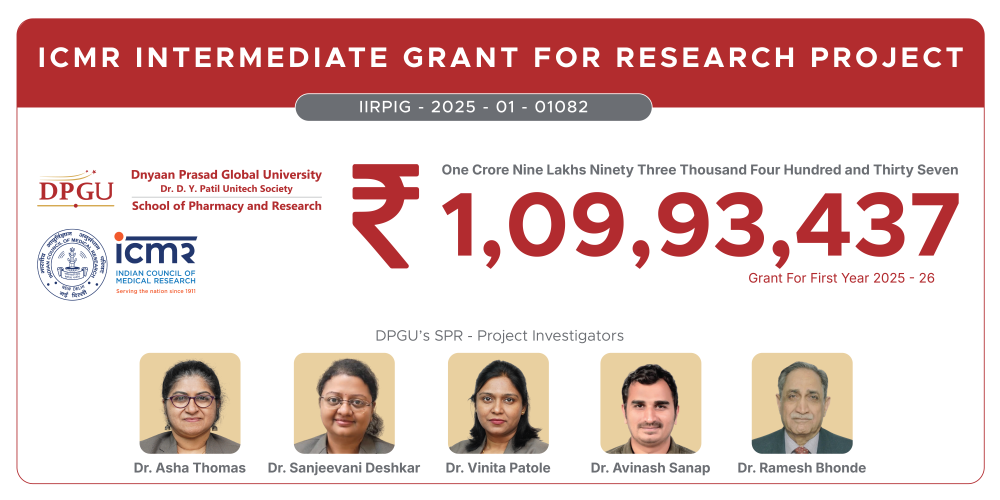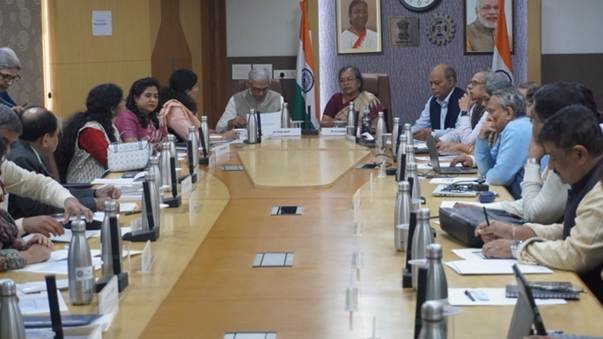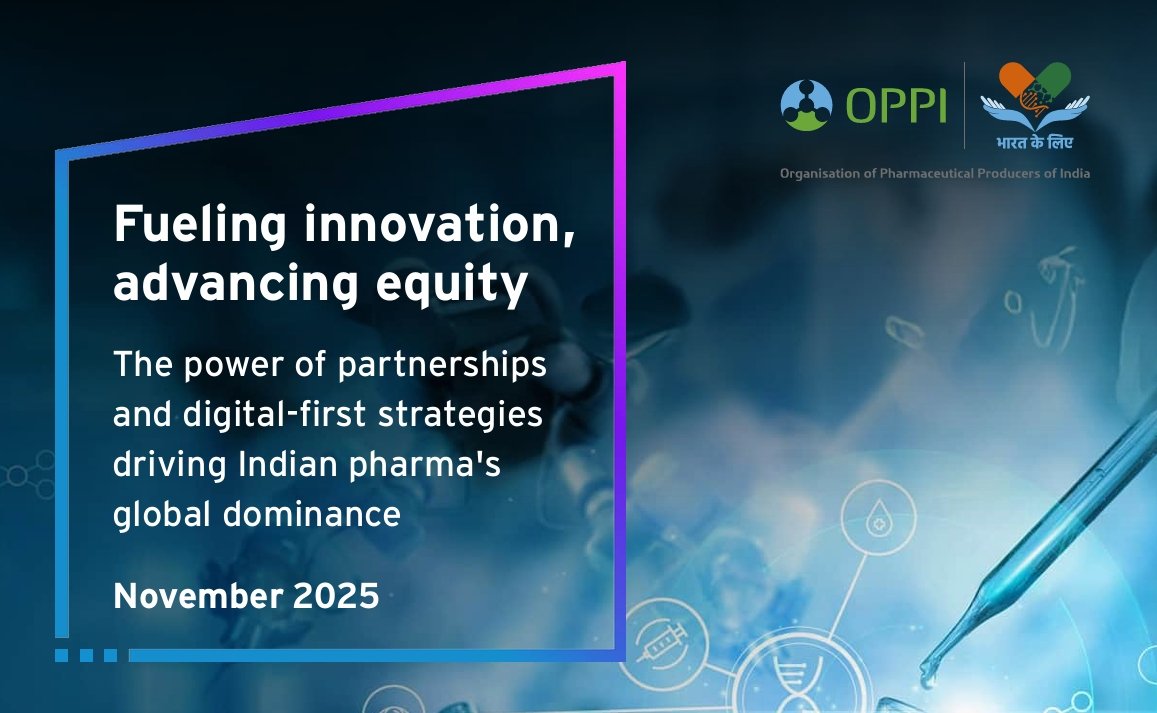"It's about not doing new things, but doing the same things differently"
January 08, 2008 | Tuesday | News
New Page 1
"It's about not doing new things, but doing
the same things differently"
-Dr MK Bhan, secretary, DBT
The National Biotech Development Strategy, unveiled recently by the
government, is expected to set new precedents for the biotech industry, as the
aim now is to focus on innovation, technology transfer, and development of an
effective scientific pool amongst others. The sector is clearly poised to take a
huge leap forward in the future with the successful implementation of the
strategy. In an exclusive interview, Dr MK Bhan, secretary, DBT, talks about the
strategy and how it proposes to make a difference to the promising biotech
sector.
What would you say is the core idea behind
this policy?
It is about not doing new things, but doing the same things
differently. It is about looking at an institution and transforming its capacity
with an integrated package. UICT Mumbai, for example, has an excellent
bioprocess engineering department and we created an integrated capacity for
molecular biology there through molecular biology positions and new labs. It has
started the biofuels program now. We plan to create a couple of such centers.
The idea is to bring an institutional change in the institutions, create
successful public-private partnerships, and enable smooth functioning of the
facilities, movement of biologicals, and streamline the regulations. The whole
idea is to create institutions with a difference so that they are facilitators.
We need more younger and mid-level people in the system which is what we shall
be achieving by attracting scientists from abroad.
How do you see the policy impacting the
biotech industry in the next five years?
Our biotech industry is largely manufacturing and services
based. So what we need is to remove all bottlenecks. We also have to develop the
innovation potential. That is a long- term strategy. I would like to see
development in areas such as translational science, clinical and field research,
product development, and R&D in the industry, all at the same pace. I would
like to see a large expansion of the scientist pool and science activity in
industry (small, medium, and large) and through government labs and a smooth
flow of ideas, people and knowledge so that more and more new ideas come forward
producing novel products. The purpose of the strategy is to head towards
innovation and produce novel products, while capitalizing on the current
opportunities in clinical research and biosimilars.
What are the objectives of the
Biotechnology Industry Partnership Program (BIPP)?
The goal is to generate IPR in advanced technology areas. We
don't expect to develop products early on as these partnerships are in
radically new fields such as stem cell therapy and nanoscience. The goal is to
enter the advanced technology area, when the potential is uncertain rather than
when the potential is established. The trend so far has been that the West
collects IPR and establishes an area in a period of few years and it is then
that we venture into it. By that time our freedom to operate is restricted by
the IPR generated by the West. Last year 7,000 patents were filed for stem cell
research, not one from India. Suddenly if we decide to enter into stem cell
research, there is no trigger left to operate because by that time the West is
way ahead and they hold critical patents. Hence we should accumulate worthwhile
patents by entering into new areas earlier.
This is the concern the BIPP addresses. This will ensure that
the industry partner gets 30-50 percent of the project cost on a shared cost
basis with some reasonable royalty arrangement for the government. The IPR thus
would be exclusively with the industry.
The whole concept is centered on entering new opportunities
at a nascent stage and hence immediate product development is not something that
we are looking for.
The program also takes into consideration the major unmet
needs of the country, where industry will not venture easily, like Tuberculosis
drugs or vaccine, AIDS vaccine or a dengue vaccine. These are unchartered
territories basically because of the high levels of uncertainty. Government's
commitment to invest in such ventures would encourage the industry to move into
an area which is relatively more risky than the safer option that they have. The
third area under BIPP is shared animal facilities like for transgenic animal
facilities, and large animal facilities. We have not explored the space of
shared facilities till now and we would like to do more in the area of expensive
shared facilities like toxicology centers, animal facilities, transgenics, and
jointly managed technology incubators amongst others.
What is your expectation from the industry
in nurturing public-private partnership?
The industry will also have to come up with novel ideas on
the areas where they need help to be able to do more innovation. So the
challenge is as much for DBT as the industry to come up with ideas. There is a
point at which there has to be a demand. I am sure BIPP would do well, more so
it being a grants scheme. We have already done some trials to understand how it
can be done. We would open up our partnership program with the industry. We will
only fund very challenging projects and the industry needs to take the risks to
attract our investments. Hence we would want the industry to think about more
challenging areas, get into them and more research foundations have to come up.
Could you elaborate on funding research
programs through BIRAC?
Promotion of R&D is a priority under the biotech
development strategy. The government is investing in a new organization, the
Biotechnology Industry Research Assistance council (BIRAC), which will manage
SBIRI and BIPP. In addition to that it will provide patenting services,
technology transfer services and in turn fund innovation. This is akin to having
a science organization and an innovation organization where the latter funds the
former to generate interesting innovation projects. Hence BIRAC will serve as
the funding agency for the industry and charge some royalty for the investment.
BIRAC as an organization will be available to service the industry with
analysis, technology forecasting, and IPR generation.
The Biotechnology Industry Research Assistance council aims
at creating more novel and interesting public-private partnership models. I have
always believed no one scheme is sufficient. We need half a dozen novel schemes
that address different niches through public private partnerships. We have put
our foot in our mouth by saying that we will invest 30 percent of DBT's budget
in public private partnership, but we depend on the industry to come up with
novel ideas. For that some high class science meetings with the industry will be
needed. It is towards this end that we have made an arrangement with FICCI on
the lines of the European technology program, called the industry partnership
platform. So we will set aside some money from the 30 percent, for funding novel
ideas that emerge from the industry partnerships.
Could you tell us more on the scheme for
joint research chair?
We have been working on a scheme for joint chairs, where DBT
and the industry will work together to create research chairs which would be
kept in academic institutions or industry or industry sponsored not-for-profit
research foundations. Such not-for-profit research foundations can take more
risks and we would fund them as if they were public sector. However, the
research foundation and the industry should have a relationship wherein if the
foundation produces some technology which is transferred to the main company,
some royalty is also given to the foundation to mobilize its research goal. With
the government funding these research foundations, they need to hire some good
scientists.
How does the Strategy intend to nurture
human capital?
Human resource has to be oriented to the industry or to
novelty, things that won't happen with routine education.
Reversing brain drain: The number of good quality PhDs we
produce is very small because we have a small pool of scientists in India. The
density of scientists as compared to the population is perhaps the smallest. To
expand PhD programs we have a new partnership scheme with Wellcome Trust under
the NBDS which will allow us to get about 50 scientists every year from abroad.
Wellcome Trust is investing ₤800 pounds per year into it with DBT
investing an equal amount. The scientists will get special fellowships and
grants to establish labs and attractive remuneration to attract the best out of
them. We thus hope to get around 500 scientists over a period of 10 years and
thus quadruple the number of PhDs. With this, we hope to bring mid-career
scientists from the US or Europe back to India. That is one critical thing we
need. We are also going to expand the Ramanujan Fellowships Scheme which again
is a reentry scheme. This would enthuse fresh leadership in new opportunity
areas. Between these two schemes we are very hopeful to attract a lot of people.
Fillip to university life science departments: We are also
giving grants to the life science departments of key universities. The first
successful step in this direction has been with the University of Hyderabad (UoH)
and IISc, Bangalore recently. The contract is that while we give them the grant,
they need to scale up their capacity in terms of faculty size, labs,
representation in disciplines to run a hugely expanded PhD program. So UoH is
going to increase its PhDs by 4-5 times than it is producing now. What we are
saying is that we will give you what it takes, to increase the number of PhDs
and the quality. Through this, we hope to pick up 20 best universities in the
country and give a major lift to their life sciences department. We intend to
take up five universities each year from this year. We hope to get another
700-800 PhDs out of this.
Setting up of new universities: We are also coming up with
eight DBT institutes, which themselves will produce a faculty of 400 that in
turn would generate 1,600 PhDs. So we will have extended PhDs. These institutes
will not be pure biology institutes but inter-disciplinary and will have strong
translation potential while preserving basic science capacity.
Multidisciplinary novel education programs: There are areas
in which the training is either insufficient or not available in sufficient
places. Or there is a totally novel education program, for example we have got
an idea of an integrated MSc program in drug discovery science. It combines
structural biology, informatics, biochemistry thus stressing on a
multidisciplinary approach. Similarly the bioengineering program that we have is
purely focused on engineering. But we are going to start a masters program in
bioengineering which reflects on medicine biology as well. We have got a list of
13 such novel education programs that we shall start this year. We are not in
favor of starting programs exclusively for biotechnology training. The focus is
on integrating all life sciences.
Star colleges and centers of excellence: We want every city
to have a star life science college. We are also planning to create facilities
for training technicians and teachers through 50 centers of excellence that we
propose to set up. This will enable people to upgrade their skills and
understanding.
Role definition for DBT institutes: We are very excited by
the idea of this new role for DBT institutes wherein they run extramural
programs and fund others in the country using their expertise and they will run
them without any self interest. They will perform a duty as national
institutions to promote academic excellence elsewhere.
What is the strategy for development of
clusters?
We are actively building these clusters. We are coming up
with agri-food technology cluster at Mohali in Punjab and a health science
biotechnology cluster with a vaccine and diagnostics and translational centre at
Faridabad along with Phase I and Phase II clinical trial facilities.
There has been a criticism on there being no hospital in the
health science cluster. So the translational institute will fund a large number
of translational units in medical schools and give them full support. The
translational institute will almost become a nucleus for supporting translation
research across the country. We hope that there will be centers for neuro
medicine and neuro engineering, diabetes and cardiovascular science,
endocrinology, bone and cartilage disease, nutrition and food science, in short
a wide variety of small research institutes. A large part of the resources will
be utilized for upgrading the translational capacity (from science to the
market) and will look at regulation, regulatory capacity, standardization,
clinical trials, and agricultural field trials amongst others. We are coming up
with a center with ICRISAT for agriculture. Then we will have resource units
along with NCPGR. The idea there is any small or medium sized company or a
public sector scientist who actually wants help with translation can use them.
Shalini Gupta










